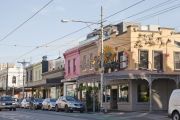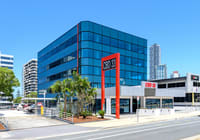
Abolition of commercial stamp duty in South Australia will help drive growth, experts say
Anna Randell
There are hopes the final phasing out of stamp duty tax on commercial transactions will lure investors and further boost confidence in South Australia’s property market.
Agents expect tax cuts, the third of a three-step program introduced by the state government in 2015, will tempt investors squeezed by a crowded eastern seaboard market.
Property Council of Australia SA chief executive Daniel Gannon said as of July 1, South Australia was ‘well on the path’ to becoming the most competitive tax regime for commercial property in the nation.
Mr Gannon said the abolition of the tax, previously levied at up to 5.5 per cent, translated to a saving of $48,830 on a $1 million commercial property, $268,830 on a $5 million property and $543,830 on a $10 million sale.
“We expect that new investors will be looking at Adelaide as a potential investment destination possibly for the first time,” he said.
“We’re told that enquiry amongst Asian investors in particular has increased significantly because of the attractive tax environment and the fact that Adelaide’s CBD has seen a good five to eight years of growth.”
JLL South Australia managing director Jamie Guerra said there was no doubt South Australia would benefit from the new tax regime.
“In particular there is strong interest from syndicates and offshore investors who can see the impact it will have (on returns),” Mr Guerra said. “This change will help turn around sentiment as people see that Adelaide as an investment destination can offer attractive returns.”
Mr Gannon said while the change was welcome, the gradual phase-in had deterred some investors. “The disadvantage in rolling it out over a three-year period is that investors were putting a handbrake to transactional behaviour in the lead-up to July 1 each year.”
He would like to see tax cuts extended to residential and primary production land to boost South Australia’s ailing annual growth rate.
“Victoria’s population grows every 27 days the equivalent to South Australia’s growth for the entire year,” he said. “We have a huge challenge on our hands: a competitive tax regime will flow on to other parts of the economy.”
Colliers SA city and metro sales director Oliver Totani said there was renewed interest in Adelaide from local and interstate investors post July 1.
“There’s no doubt that there has been an uplift effect on the market,” Mr Totani said. “I think we’re seeing a lift in business confidence across the board, largely driven by the new Liberal government after 16 years under Labor.”
Mr Totani did not expect upward pressure on prices, but said the biggest impact would be on consumer sentiment.
“(Stamp duty tax) is not the silver bullet Adelaide needs to drive growth, but it’s an opportunity to get rid of a barrier to investment, and that’s a positive.”










